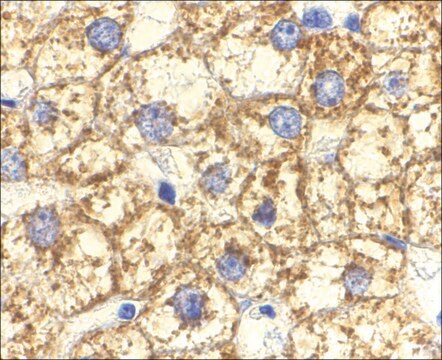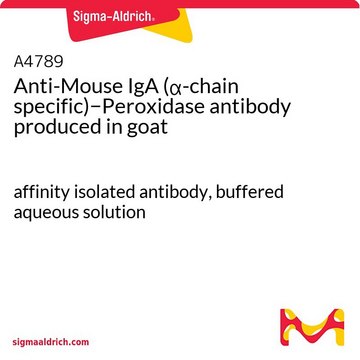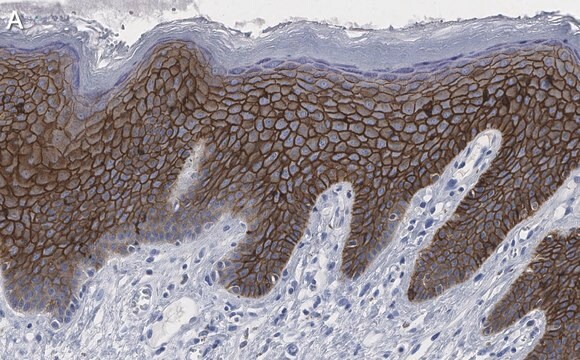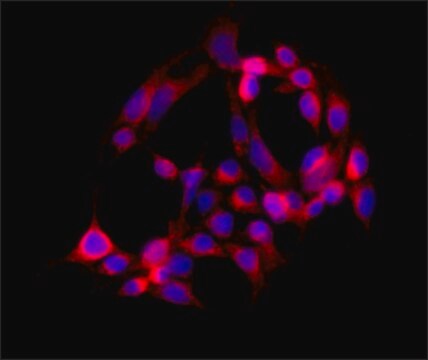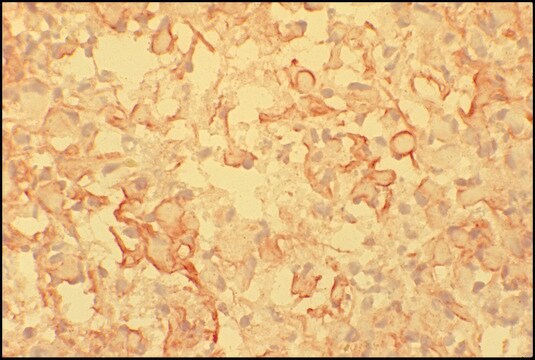SAB4200125
Anti-Notch3 antibody, Rat monoclonal
purified from hybridoma cell culture
Sinónimos:
Anti-CADASIL, Anti-CASIL, Monoclonal Anti-Notch3 antibody produced in rat
About This Item
Productos recomendados
origen biológico
rat
conjugado
unconjugated
forma del anticuerpo
purified from hybridoma cell culture
tipo de anticuerpo
primary antibodies
clon
monoclonal
Formulario
buffered aqueous solution
mol peso
antigen ~270 kDa
reactividad de especies
rat, human
envase
antibody small pack of 25 μL
técnicas
western blot: 2-4 μg/mL using using Jurkat cell extracts
isotipo
IgG2a
Nº de acceso UniProt
Condiciones de envío
dry ice
temp. de almacenamiento
−20°C
modificación del objetivo postraduccional
unmodified
Información sobre el gen
human ... NOTCH3(4854)
rat ... Notch3(56761)
Descripción general
Members of the Notch gene family encode transmembrane receptors. Mammals have four Notch receptors, Notch1 through Notch4. Notch1 and Notch2 have the highest homology with each other, whereas Notch3 and Notch4 are structurally divergent, lacking the transactivation domain that is found in Notch1 and Notch2. The Notch3 receptor possesses 34 extracellular epidermal growth factor (EGF)-like repeats and three cysteine-rich Notch/LIN12 repeats (LIN). It also contains two protein-protein interaction domains, the RAM domain (R), two nuclear localization signals (NLS), six ankyrin (ANK) repeats and a PEST sequence (P) at its cytoplasmic portion. The NOTCH3 gene is mapped to human chromosome 19p13.12.
Especificidad
Inmunógeno
Aplicación
Acciones bioquímicas o fisiológicas
Forma física
Almacenamiento y estabilidad
Cláusula de descargo de responsabilidad
¿No encuentra el producto adecuado?
Pruebe nuestro Herramienta de selección de productos.
Código de clase de almacenamiento
10 - Combustible liquids
Punto de inflamabilidad (°F)
Not applicable
Punto de inflamabilidad (°C)
Not applicable
Elija entre una de las versiones más recientes:
Certificados de análisis (COA)
¿No ve la versión correcta?
Si necesita una versión concreta, puede buscar un certificado específico por el número de lote.
¿Ya tiene este producto?
Encuentre la documentación para los productos que ha comprado recientemente en la Biblioteca de documentos.
Nuestro equipo de científicos tiene experiencia en todas las áreas de investigación: Ciencias de la vida, Ciencia de los materiales, Síntesis química, Cromatografía, Analítica y muchas otras.
Póngase en contacto con el Servicio técnico


